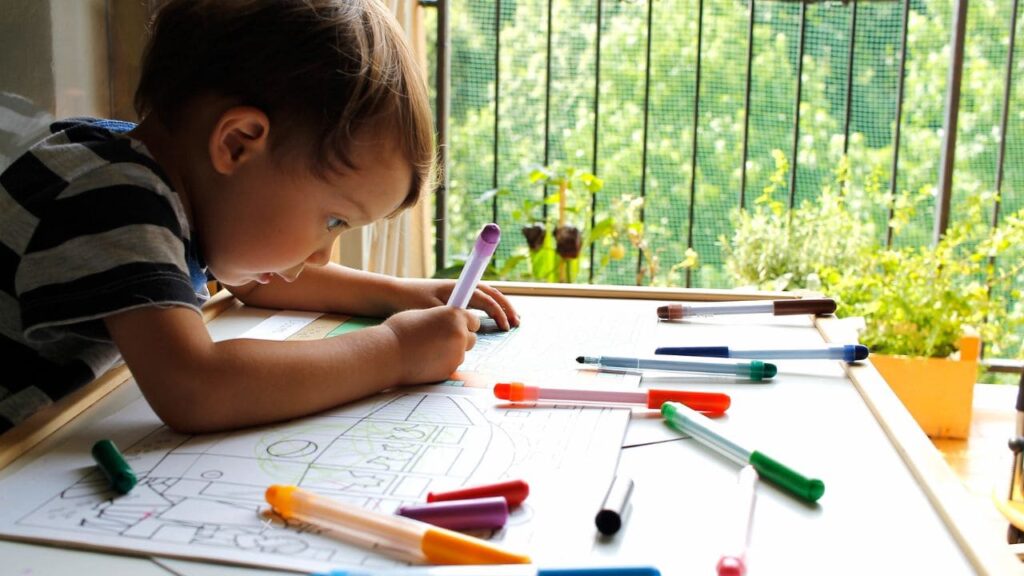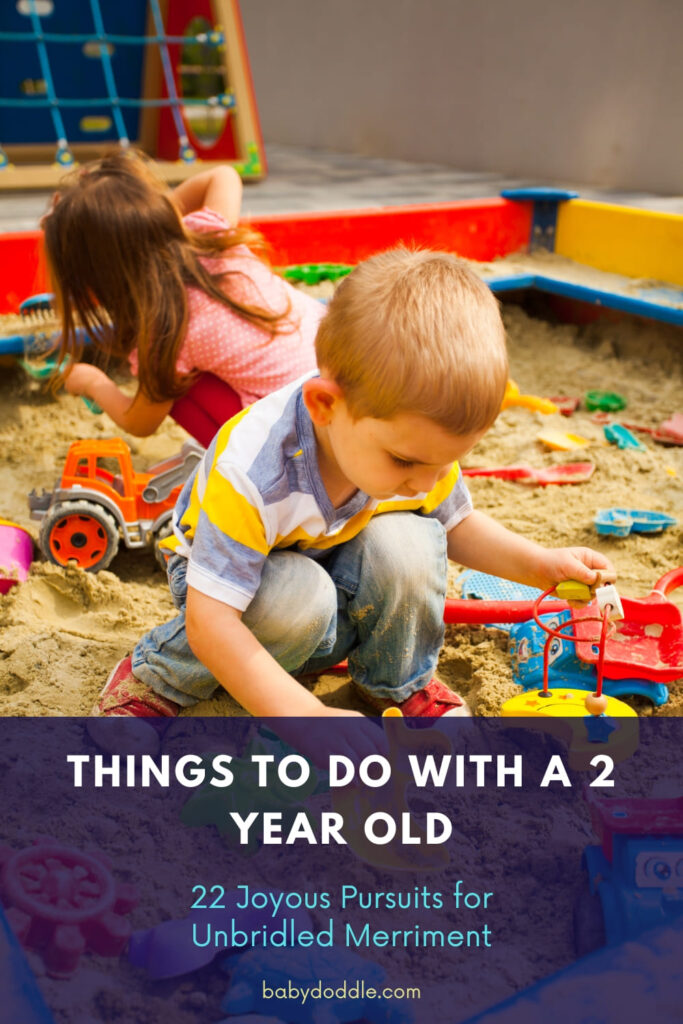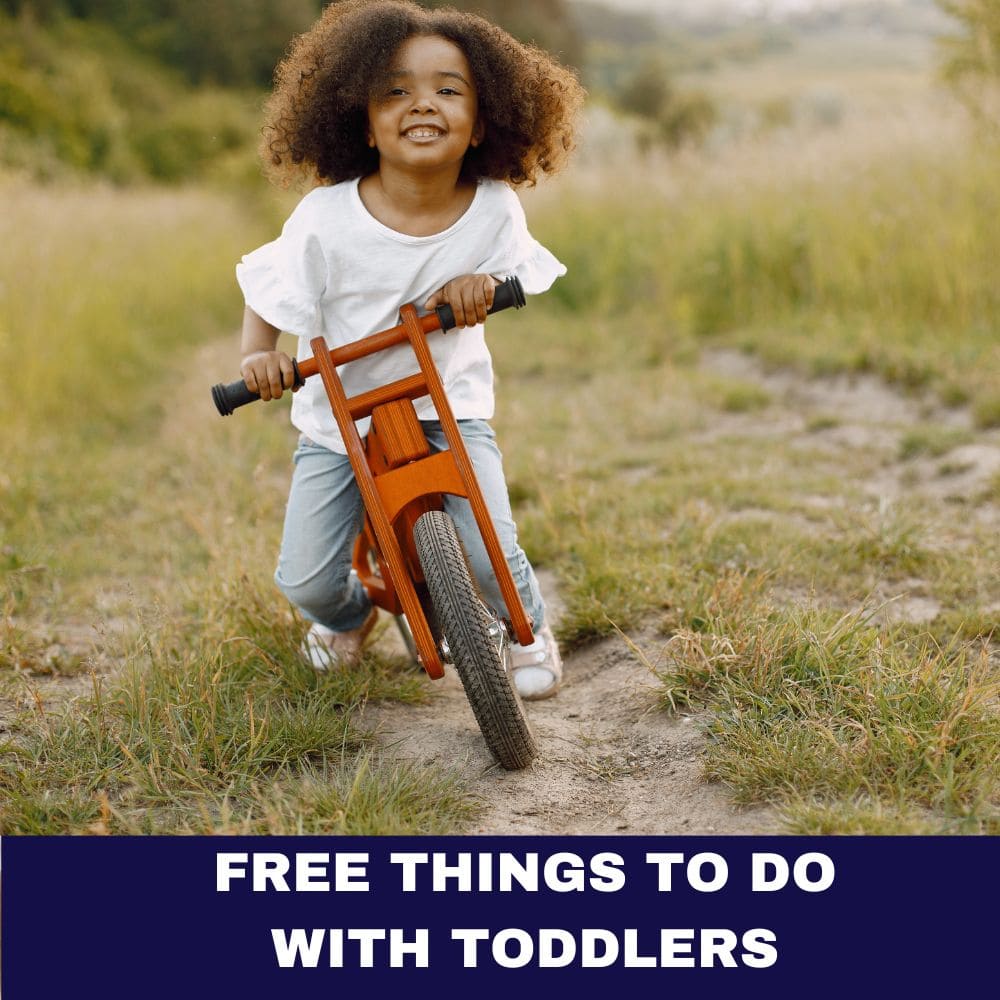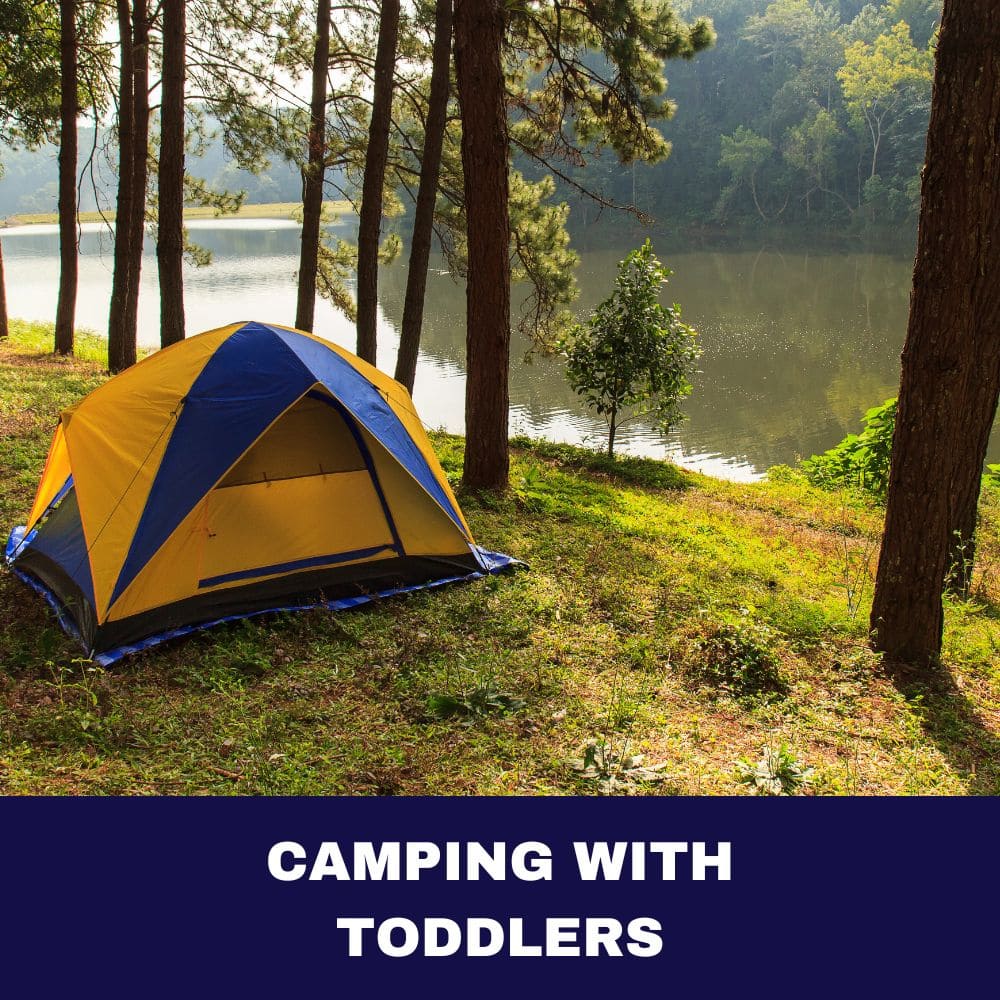Buckle up, parents! If you’re looking for things to do with a 2 year old, get ready to embark on an exhilarating journey filled with laughter, learning, and unforgettable moments. As your little one transitions into the whirlwind of the “terrible twos,” it’s the perfect time to embrace the boundless energy and curiosity that comes with this age. In this comprehensive guide, we’ll unveil 22 joyous pursuits guaranteed to spark unbridled merriment in your 2-year-old, creating cherished memories that will last a lifetime.
Unlock a World of Wonder: Engaging Activities for Your 2-Year-Old
The toddler years are a magical time when every day is an adventure waiting to be discovered. During this stage, your little one is rapidly developing their cognitive, physical, emotional, and social skills. Play is not just a way to pass the time; it’s a vital component in fostering these essential areas of growth. Through play, your 2-year-old learns about the world around them, develops problem-solving abilities, and builds self-confidence.

Educational Activities to Foster Learning
While play is undoubtedly the primary focus during this age, it’s also crucial to incorporate educational elements into your child’s activities. By making learning fun and engaging, you can help lay a solid foundation for future academic success. Here are some creative ways to introduce numbers, letters, colors, and shapes through interactive games:
Color Sorting
One of the simplest yet enjoyable activities for 2-year-olds is color sorting. Gather a collection of objects in various colors, such as blocks, balls, or pom-poms, and encourage your little one to sort them into different groups based on their hues. This activity not only reinforces color recognition but also helps develop fine motor skills and hand-eye coordination.
Letter Matching
Introduce your child to the world of letters by creating a letter matching game. Cut out large letters from colorful cardboard or foam, and have your little one match identical letters together. You can also incorporate letters into everyday tasks, such as pointing out the first letter of their name on cereal boxes or road signs.
Pattern Matching
Pattern recognition is an essential skill for cognitive development, and it can be practiced through fun activities. Use household items like beads, buttons, or even dry pasta to create simple patterns, and encourage your child to replicate or extend them. This activity not only boosts their problem-solving abilities but also enhances their concentration and focus.
Play Math and Reading Games Online
In today’s digital age, there are numerous educational apps and websites designed specifically for toddlers. Take advantage of these resources by introducing your child to age-appropriate math and reading games. These interactive platforms make learning engaging and exciting, all while reinforcing important concepts.
Put Together a Simple Toy Train Set
Assembling a toy train set is a fantastic way to encourage creative thinking and fine motor skills. As your child connects the tracks and positions the trains, they’ll learn about spatial awareness, problem-solving, and sequencing. Plus, it’s an activity that can be enjoyed together, creating quality bonding time.
Paint With Watercolors
Unleash your child’s artistic side by introducing them to the wonders of watercolor painting. Not only does this activity promote creativity and self-expression, but it also helps develop fine motor skills and hand-eye coordination. Provide them with a large sheet of paper, and let their imagination run wild as they create vibrant masterpieces.
Next-Step Advice: Incorporate these educational activities into your daily routine, but remember to keep them fun and engaging. Praise your child’s efforts and celebrate their accomplishments, no matter how small. This positive reinforcement will encourage them to continue learning and exploring.
Developmental Activities for 2-Year-Olds
During this crucial stage, your child is rapidly developing various skills and abilities. It’s essential to provide them with activities that foster their overall development, including communication, motor skills, and problem-solving. Here are some engaging activities that cater to these areas:
| Activity | Skills Developed |
| Talk to Your Baby | Language development, communication |
| Trace the Body | Body awareness, fine motor skills |
| Get Dressed | Independence, self-help skills |
| Put Toys Away | Organization, responsibility |
| Clap to the Beat | Rhythm, physical coordination |
| Read to Your 2-Year-Old | Literacy, imagination, bonding |
| Imitate Animal Sounds | Language, creativity, humor |
Talk to Your Baby
It might seem simple, but engaging in conversation with your 2-year-old is one of the most effective ways to encourage language development. Ask them questions, describe your surroundings, and listen attentively as they respond. This back-and-forth exchange not only builds their vocabulary but also strengthens the bond between you and your child.
Trace the Body
Grab a large piece of paper and trace your child’s body outline. Once you’ve outlined their shape, encourage them to decorate it with various materials, such as crayons, stickers, or fabric scraps. This activity helps them identify body parts, promotes creativity, and develops fine motor skills.
Get Dressed
While it might take a little more time and patience, involving your child in the process of getting dressed is a fantastic way to foster independence and self-help skills. Let them choose their outfit, practice buttoning and zipping, and praise their efforts throughout the process.
Put Toys Away
Teaching your child to clean up after playtime is not only practical but also helps develop their organizational skills and sense of responsibility. Make it a game by singing a clean-up song or setting a timer, and reward them for their efforts with a special treat or activity.
Clap to the Beat
Introduce your child to the world of rhythm by clapping to the beat of their favorite songs or nursery rhymes. This simple activity not only promotes physical coordination but also helps develop their auditory processing skills.
Read to Your 2-Year-Old
Reading to your child is one of the most rewarding and beneficial activities you can engage in. Not only does it foster language development and expand their vocabulary, but it also nurtures their imagination and creates a special bonding experience. Make it a daily routine, and encourage your child to participate by turning pages, pointing out objects, or retelling the story in their own words.
Imitate Animal Sounds
Tap into your inner animal by encouraging your child to imitate the sounds of various creatures. This playful activity not only promotes language development but also ignites their imagination and sense of humor.
Next-Step Advice: Celebrate your child’s developmental milestones, but remember that every child progresses at their own pace. If you have any concerns, don’t hesitate to consult with your pediatrician or early childhood educators for guidance and support.

Indoor Activities for Rainy Days
When the weather outside is less than inviting, don’t let the fun stop! There are countless indoor activities that can keep your 2-year-old entertained and engaged. From arts and crafts to imaginative role-play, these pursuits will not only provide hours of entertainment but also foster various developmental skills.
Play Kitchen Assistant
Transform your little one into a mini chef by involving them in simple kitchen tasks. Let them assist you in mixing ingredients, rolling out dough, or decorating baked goods. This activity not only promotes fine motor skills and hand-eye coordination but also encourages healthy eating habits and builds confidence.
Pillow Roller Coasters
Turn your living room into an indoor amusement park by constructing a pillow roller coaster. Arrange cushions and blankets in a winding path, and let your child’s imagination run wild as they send toys or balls on thrilling rides. This activity encourages creativity, problem-solving, and physical activity.
Rescue Animals (from zip-lock bags)
Tap into your child’s sense of adventure and nurturing instincts by creating a rescue mission. Hide small stuffed animals or toys in zip-lock bags filled with shredded paper or packing peanuts, and let your little one “rescue” them. This activity promotes fine motor skills, problem-solving, and imaginative play.
Balloon Pop
Who doesn’t love the excitement of popping balloons? Fill a room with inflated balloons and let your child loose. This simple yet exhilarating activity not only provides physical exercise but also promotes gross motor skills, hand-eye coordination, and pure joy.
Origami for Toddlers
Introduce your child to the art of origami by starting with simple shapes and designs. Folding paper not only develops fine motor skills and concentration but also fosters creativity and a sense of accomplishment.
Magnetic Letters
Invest in a set of magnetic letters and let your child explore the world of wordplay. Encourage them to spell out familiar words, create new ones, or simply arrange the letters in fun patterns. This activity reinforces letter recognition and sets the stage for early literacy development.
Decorating with Clothes Pegs
Transform ordinary clothes pegs into colorful characters by decorating them with markers, googly eyes, or pipe cleaners. Once your creations are complete, encourage your child to use them in imaginative play scenarios or for simple counting and sorting activities.
Transfer Books and Toys From One Box to Another
Sometimes, the simplest activities can be the most entertaining. Provide your child with two boxes or baskets and let them transfer books, toys, or other household items from one container to the other. This activity promotes hand-eye coordination, problem-solving skills, and an understanding of spatial relationships.
Play with Kinetic Sand
If you haven’t introduced your child to the wonders of kinetic sand, you’re in for a treat. This moldable, sand-like material provides hours of sensory exploration and imaginative play. Encourage your child to sculpt, mold, and create various shapes and structures, fostering their creativity and fine motor skills.
Next-Step Advice: Keep a designated area or storage bins for indoor activities, making it easy to rotate toys and materials to maintain your child’s interest. Involve your little one in the cleanup process, reinforcing organizational skills and responsibility.
Outdoor Adventures for Sunny Days
Fresh air and sunshine are essential for a 2-year-old’s physical and mental well-being. When the weather cooperates, seize the opportunity to explore the great outdoors and engage in exciting outdoor pursuits. These adventures not only promote physical activity but also nurture your child’s curiosity and love for nature.
Explore the Local Rockpools
If you live near a beach or coastal area, exploring rockpools can be an unforgettable adventure for your 2-year-old. Guide them in discovering the fascinating creatures that call these tidal pools home, such as crabs, starfish, and sea anemones. This activity fosters a love for nature, encourages observation skills, and sparks curiosity about the world around them.
Whip Up Something Tasty in a Mud Kitchen
What could be more delightful than letting your little one indulge in the messy joys of a mud kitchen? Set up a designated area in your backyard with various containers, utensils, and natural materials like leaves, sticks, and pebbles. Encourage your child to concoct their own mud pies, soups, and other imaginative creations, fostering their creativity and problem-solving skills.
Go Outside at Night and Look at the Stars
On a clear night, bundle up your little one and venture outside to gaze at the twinkling stars. Point out familiar constellations, count the stars together, or simply bask in the wonder of the night sky. This activity not only promotes an appreciation for nature but also fosters curiosity and a sense of awe.
Watch Planes Fly Overhead
For many 2-year-olds, the sight of airplanes soaring through the sky is nothing short of magical. Find a spot where you can comfortably observe planes taking off or landing, and engage your child in discussions about their observations. This activity encourages critical thinking, language development, and a fascination with the world around them.
Take Them on a Bush Walk
Immerse your child in the wonders of nature by embarking on a bush walk or hiking adventure. Point out different plants, trees, and creatures along the way, encouraging them to use their senses to explore the great outdoors. This activity not only promotes physical activity but also nurtures their appreciation for the natural world.
Take a Dump Truck and Buckets to the Beach or River
For many 2-year-olds, the simple pleasure of digging in sand or playing with water can provide hours of entertainment. Pack a dump truck, buckets, and shovels, and let your child’s imagination run wild as they create sandcastles, dig for buried treasures, or explore the wonders of water play.
Have a Dance Party
What better way to unleash your child’s boundless energy than with a good old-fashioned dance party? Crank up their favorite tunes, clear a space in your backyard or living room, and let the moves flow freely. This activity not only promotes physical activity but also fosters self-expression, creativity, and pure joy.
Paint with Ice Cubes
Combine the excitement of painting with the coolness of ice cubes for a unique outdoor art experience. Freeze water mixed with food coloring or paint in ice cube trays, and let your child use the vibrant ice cubes as brushes on a canvas or sidewalk. This activity encourages creativity, sensory exploration, and fine motor skills.
Dress Up as Funny Characters
Tap into your child’s imagination by encouraging them to dress up as their favorite characters or create entirely new personas. Gather a collection of costumes, props, and accessories, and let the role-playing commence. This activity not only fosters creativity and self-expression but also promotes social skills and empathy.
Take Them on a Nature Scavenger Hunt
Turn your backyard or local park into an adventure by creating a nature scavenger hunt. Provide your child with a list of items to find, such as a specific leaf shape, a pinecone, or a feather. This activity not only encourages exploration and observation skills but also promotes physical activity and an appreciation for the natural world.
Play with Balls
Sometimes, the simplest toys can provide the most joy. Grab a variety of balls in different sizes, colors, and textures, and let your child engage in a range of activities, from throwing and catching to rolling and bouncing. This activity promotes gross motor skills, hand-eye coordination, and endless fun.
Enjoy an Ice Block in the Sun
On a hot summer day, there’s nothing quite as refreshing as enjoying a delicious ice block or popsicle. Sit back, relax, and savor the moment as your little one experiences the simple pleasures of this cool treat. This activity not only provides hydration but also encourages mindfulness and the appreciation of small joys.
Make Liquid Chalk and Paint the Footpath
Transform your outdoor space into a canvas by creating homemade liquid chalk. Mix equal parts of cornstarch, water, and food coloring, and let your child unleash their creativity by painting the footpath, driveway, or even the fence. This activity fosters artistic expression, fine motor skills, and a sense of freedom.
Make Your Own Paint Brushes
Engage your child’s creativity and resourcefulness by encouraging them to make their own unique paint brushes. Gather a variety of materials, such as twigs, leaves, feathers, or even sponges, and let your child experiment with different textures and techniques. This activity promotes problem-solving skills, fine motor development, and a love for art.
Make Some Play Dough or Pikelets
Get your little one involved in the kitchen by whipping up a batch of homemade play dough or pikelets (small pancakes). Not only will they learn valuable skills like measuring and mixing, but they’ll also have a delicious or malleable creation to enjoy afterwards.
Play with Water on a Hot Day
On a scorching summer day, there’s nothing more refreshing than water play. Set up a small wading pool, sprinkler, or even a simple bucket of water, and let your child splash, pour, and explore the wonders of this cool element. This activity not only promotes sensory exploration but also provides a fun way to beat the heat.
Next-Step Advice: Embrace the great outdoors and make the most of sunny days by incorporating outdoor activities into your routine. Pack a picnic lunch, apply sunscreen generously, and create lasting memories as you explore the world together.
Sensory Experiences to Stimulate the Senses
Sensory play is an essential part of a child’s development, helping them understand the world around them through touch, sight, sound, smell, and taste. By engaging their senses, you’ll not only foster their cognitive growth but also provide them with opportunities for imaginative play and self-expression.
Make Rice or Spaghetti Sensory Tubs
Create a tactile wonderland by filling a large container or tub with dry rice or cooked spaghetti. Add various objects, toys, or household items for your child to discover, and let their curiosity guide their exploration. This activity not only stimulates their sense of touch but also encourages problem-solving and fine motor skills.
Teach Them to Sort Colors
Sorting colors is not only an essential skill for early learning but also a delightful sensory experience. Gather a variety of objects in different hues, such as pom-poms, blocks, or even fruits and vegetables, and encourage your child to sort them into groups based on their colors. This activity reinforces color recognition while also promoting hand-eye coordination and fine motor skills.
Awesome Threading Ideas for Little Hands
Threading activities are a fantastic way to develop your child’s fine motor skills and hand-eye coordination. You can create your own threading materials by stringing large beads or pasta onto shoelaces or pipe cleaners. Alternatively, you can purchase child-safe lacing toys designed specifically for this purpose. Encourage your little one to create their own patterns or designs as they thread, fostering their creativity and problem-solving abilities.
Push Pipe Cleaners
Through a Colander Repurpose a colander or strainer by turning it into a sensory activity that promotes fine motor skills and hand-eye coordination. Encourage your child to push pipe cleaners or chenille stems through the holes of the colander, creating vibrant and textured designs. This simple yet engaging activity not only stimulates their sense of touch but also fosters concentration and problem-solving abilities.
Make a Rattle with a Bottle
Transform an empty plastic bottle into a homemade rattle by filling it with dried beans, rice, or even small pebbles. Secure the lid tightly, and let your child shake and explore the rhythmic sounds they create. This activity not only engages their auditory senses but also promotes gross motor skills and an understanding of cause and effect.
Get Sticky with Contact Paper
Tap into your child’s sense of touch and creativity by creating a sticky masterpiece using contact paper. Place a sheet of contact paper, sticky side up, on a flat surface and encourage your little one to arrange various materials, such as tissue paper, pom-poms, or even leaves and petals, onto the sticky surface. This activity not only stimulates their tactile senses but also fosters artistic expression and fine motor skills.
Next-Step Advice: Sensory play is not only enjoyable but also essential for your child’s development. Rotate different materials and activities to keep their interest piqued, and remember to supervise them closely to ensure their safety and prevent any choking hazards.
Encouraging Creativity and Imagination
Nurturing a child’s creativity and imagination is crucial for their overall development. By fostering these skills, you’ll not only promote self-expression and problem-solving abilities but also set the stage for future success in various aspects of life. Here are some activities that will ignite your child’s creative spark:
Creative storytelling: Encourage your child to create their own stories by providing them with simple props, such as stuffed animals or household objects. Ask them questions about the characters, settings, and plot, and let their imagination run wild.
Open-ended art projects: Set up an art station with a variety of materials, such as crayons, paints, clay, or recycled items, and let your child explore and create without any specific instructions or expectations.
Dramatic play: Create a designated space for imaginative play, such as a miniature kitchen or a cozy reading nook. Encourage your child to act out different roles and scenarios, fostering their social and emotional development while boosting their creativity.
Music and movement: Put on some lively tunes and encourage your child to move freely, interpreting the music through dance and creative expression.
Building and construction: Provide your child with blocks, Legos, or even recyclable materials like cardboard boxes and plastic containers, and let them construct their own creations, fostering spatial awareness and problem-solving skills.
Next-Step Advice: Celebrate your child’s creativity and imaginative ideas, and avoid criticizing or correcting their creations. Offer encouragement and praise their efforts, as this will nurture their confidence and foster a lifelong love for creative expression.
Involving the Whole Family
Family time is invaluable, and many of these activities can be enjoyed by everyone. By involving the whole family, you’ll not only create cherished memories but also foster a sense of togetherness and strengthen family bonds.
Stack Blocks, Boxes, and Cans to Build a Castle
Tap into your collective imagination by gathering household items like blocks, cardboard boxes, and canned goods to construct an epic castle or fort. Encourage each family member to contribute their ideas and design elements, fostering teamwork and creative problem-solving.
Next-Step Advice: Make family time a priority by scheduling regular outings or activities that involve everyone. Encourage each family member to take turns choosing the activity, fostering a sense of inclusivity and shared decision-making.
Safety Considerations for 2-Year-Olds
While having fun is the priority, safety should always come first. It’s essential to take precautions and create a secure environment for your child to explore and play without risking harm. Here are some tips to ensure your child’s well-being during playtime:
Supervision: Never leave your 2-year-old unattended, even for a moment. Maintain constant supervision to prevent accidents or potential hazards.
Childproofing: Thoroughly childproof your home by securing cabinets, covering electrical outlets, and removing any small objects that could pose a choking hazard.
Age-appropriate toys: Carefully choose toys that are suitable for your child’s age and developmental stage. Avoid toys with small parts or sharp edges that could cause injury.
Outdoor safety: When playing outside, ensure that the area is secure and free from potential hazards, such as pools or bodies of water without proper fencing or supervision.
Sun protection: Protect your child’s delicate skin by applying sunscreen and providing shade or protective clothing when playing outdoors.
Emergency preparedness: Keep emergency contact information and first-aid supplies readily available in case of accidents or unexpected situations.
By prioritizing safety, you can ensure that your child’s playtime is not only enjoyable but also secure, allowing you to focus on creating lasting memories without unnecessary worries.
Adapting Activities to Your Child’s Interests and Needs
Every child is unique, with their own interests, abilities, and needs. It’s essential to tailor these activities to suit your child’s preferences and developmental stage. Here are some tips for adapting these pursuits to ensure they resonate with your little one:
Observe your child’s interests: Take note of the toys, books, or activities that capture your child’s attention the most. Use these preferences as a starting point for introducing new activities or modifying existing ones.
Consider your child’s learning style: Some children thrive with hands-on, tactile experiences, while others may respond better to auditory or visual stimuli. Adapt the activities to suit your child’s dominant learning style.
Adjust the difficulty level: If an activity seems too challenging or too easy for your child, make adjustments to increase or decrease the level of difficulty. This will prevent frustration and ensure that the activity remains engaging and rewarding.
Incorporate your child’s favorite characters or themes: Weave in your child’s favorite storybook characters, superheroes, or themes into the activities to capture their attention and make the experience more relatable.
Seek input: Involve your child in the planning process by asking them what they would like to do or what materials they would like to use. This will not only foster their sense of autonomy but also increase their engagement and enjoyment.
By tailoring these activities to your child’s unique needs and interests, you’ll create a more meaningful and enjoyable experience, fostering their love for learning and exploration.
Fun Activities with No Prep, No Mess
Sometimes, you just need quick and easy activities that don’t require much preparation or cleanup. These low-maintenance options are perfect for those busy days when you need to keep your little one entertained without too much fuss.
Imaginative play with household items: Encourage your child to use common household items, such as boxes, pots and pans, or blankets, to create imaginative scenarios and role-play different characters or situations.
Sing and dance party: Turn on some lively music and have an impromptu sing-and-dance party with your little one. This not only provides physical activity but also promotes self-expression and joy.
Storytelling games: Take turns making up stories with your child, encouraging them to contribute their own ideas and plot twists. This activity fosters creativity, language development, and bonding.
Freeze dance: Play music and encourage your child to dance and move around. When you pause the music, they must freeze in place, promoting listening skills and body control.
Indoor obstacle course: Rearrange furniture or use household items to create a simple indoor obstacle course. Encourage your child to crawl, jump, or navigate through the course, fostering physical development and problem-solving skills.
Next-Step Advice: Keep a designated area or bin stocked with simple, no-prep toys or materials, such as scarves, dress-up clothes, or stuffed animals, for those times when you need a quick and easy activity to engage your child.
Resource Guide: Books, Websites, and Apps
To further enhance your child’s experience and provide additional inspiration, we’ve curated a list of recommended books, websites, and apps that offer valuable resources for engaging 2-year-olds.
Books:
- “Unplugged Play” by Bobbi Conner
- “The Toddler’s Busy Book” by Trish Kuffner
- “The Montessori
- “The Artful Parent” by Jean Van’t Hul 5. “Tinkerlab” by Rachelle Doorley 6. “The Creativity Crusade” by Dr. Richard Rende
Websites:
- www.funlearningforkids.com
- www.handsonaswegrow.com
- www.nobiggie.net
- www.busytoddler.com
- www.learningresources.com
Apps:
- Khan Academy Kids
- ABCkidTV
- Endless Alphabet
- Endless Reader
- Toca Life World
- Daniel Tiger’s Grr-ific Feelings
These resources offer a wealth of ideas, activities, and educational content tailored specifically for 2-year-olds. From art projects and sensory play to early literacy and math concepts, these books, websites, and apps will provide endless inspiration and support as you embark on this exciting journey of fostering your child’s development through play.
Get Started Now!
With this comprehensive guide at your fingertips, you’re now equipped with a treasure trove of joyous pursuits to captivate your 2-year-old’s boundless curiosity and energy. Remember, the key to success lies in embracing the moment, letting your child’s imagination soar, and cherishing the laughter and love that these activities bring.
Don’t wait another day to unlock the wonders of play and learning. Gather your supplies, clear a space, and invite your little one to join you on this incredible adventure. With each activity, you’ll not only foster their cognitive, physical, emotional, and social growth but also create lasting memories that will be etched in your hearts forever.
So, what are you waiting for? The world of endless possibilities awaits! Dive in, have fun, and witness the magic unfold as your child’s eyes light up with wonder and their smile radiates pure, unbridled merriment.
Embrace the laughter, the messes, and the moments of pure joy that come with exploring the world through your child’s eyes. For it is in these sacred moments that the true magic of childhood resides, and the memories you create today will become the treasures of tomorrow.
So, dive in, embrace the adventure, and let the unbridled merriment begin!
FAQ – Things to Do with a 2 Year Old
How do I keep my 2-year-old engaged during activities?
To maintain your child’s interest, rotate activities frequently, incorporate their favorite toys or characters, and follow their lead. If they seem disinterested, switch to a new activity or take a break. It’s also essential to adapt activities to their developmental level and provide plenty of encouragement and praise.
How much time should I dedicate to structured activities with my 2-year-old?
At this age, children have short attention spans, so it’s best to keep structured activities brief, around 10-15 minutes at a time. Intersperse these activities with plenty of free play and downtime to prevent overstimulation.
Is it okay if my child doesn’t seem interested in certain activities?
Absolutely! Every child has their own interests and preferences. If your child shows no interest in a particular activity, don’t force it. Instead, observe what captures their attention and tailor activities accordingly. The key is to make playtime enjoyable for both you and your child.
How can I incorporate learning into playtime without making it seem like work?
The beauty of play-based learning is that it happens naturally and effortlessly. By engaging in activities that foster cognitive, physical, emotional, and social development, your child will be learning without even realizing it. Focus on making activities fun, interactive, and engaging, and the learning will follow.
What if I run out of activity ideas?
Don’t worry! This comprehensive guide, along with the recommended resources, provides a wealth of inspiration. Additionally, don’t hesitate to seek out new ideas from fellow parents, early childhood educators, or online communities dedicated to fostering child development through play.












